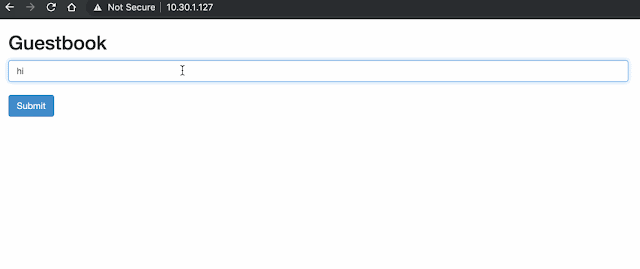Everything Started so Promisingly
If you’re an IT decision-maker who has purchased headsets for users, you know it can be an investment with one of the most uncertain returns: you buy them, distribute them, and then begins the challenge of tracking headsets and troubleshooting audio issues. A time-consuming chore that was supposed to be easy!
You met all the major headset vendors, tested their finest acoustic features, then, based on your budget and assumptions on the end-user preferences, you chose a certain mix of headsets for the corporate catalog or a bulk purchase.
Those vendors demonstrated their latest and greatest backend tools that allow you to collect usage data and track headsets. You could figure out the ROI of your headset investment and, most importantly, understand user preferences, so that next time you can make a data-driven decision in purchasing the right mix of devices.
A dream come true until you realize that:
◉ The data collected from the headset is inconsistent and partial:
◉ Users must have a client app running on their machine; since the app is considered useless by many, it ends up uninstalled, killed or removed from the startup list.
◉ Most of the time, the app works with PCs only, leaving out of the picture an ever-increasing headset usage with mobile devices.
◉ You may be paying for a service with limited scope (headset only) that doesn’t deliver an integrated view with rest of your collaboration platform
◉ You may be paying for a service with limited scope (headset only) that doesn’t deliver an integrated view with rest of your collaboration platform.
You are back to square one with no actionable insights, more overhead, and extra time spent managing a solution that does not meet all your needs. Cisco believes there is a better solution. Cisco believes there is a better solution! We are committed to leveraging the power of the Webex platform to deliver unprecedented headset management capabilities that solve the limitations of other vendors’ solutions.
Workplace Transformation Challenge
Ubiquitous connectivity, powerful mobile devices, and increasing adoption of soft clients foster the emergence of new workflows that are no longer tied to physical desks. More and more of us are becoming mobile-first workers who accomplish their daily tasks from anywhere, using a laptop or smartphone. In these scenarios, the headset is a critical element to enable high quality, crystal clear communication and collaboration in often noisy environments: open offices, coffee shops, train stations, buses, etc.
This modern, mobile work style throws up particular challenges for IT:
How do we make sure we collect the headset data we need in these dynamic scenarios?
How do we easily make relevant information readily available to support teams and business decision makers?
The perfect solution has to satisfy the following criteria:
1. It must work in any user scenario: anywhere, with both laptops, smartphones, and tablets.
2. It needs to collect the headset data automatically – without the complexity of managing headset client applications.
3. It needs to be part of the everyday toolset IT uses already – so that it is easily accessible.
If you are a Cisco on-premises customer, you may know that Cisco Unified Call Manager (CUCM) supports inventory, remote FW upgrade and remote configuration for Cisco Headsets connected to IP phones and Jabber soft clients. An unprecedented integration which satisfies the perfect solution criteria for companies in verticals characterized by more traditional workflows.
A perfect solution for on-premises customers that deserves to be extended to the Cloud!
Cisco Webex: Powerful Headset Management with Low IT Touch
Cisco Webex provides essential meetings, calling, and team collaboration for enterprises of all sizes, worldwide. Webex Control Hub is Cisco’s single pane of glass management for cloud and hybrid services. We are excited to announce the release of headset inventory management in Control Hub; a capability that, along with remote firmware upgrade through Webex Teams, represents a solid foundation in building the most comprehensive headset management solution in the market.
IT can buy any Cisco Headsets, 500 and 700 Series (limited tracking abilities on third-party headsets). Once distributed to users and plugged-in or paired to a laptop (Mac or PC) running Webex Teams, the headsets appear in Control Hub in the devices section (along with the rest of the collaboration portfolio) showing relevant inventory information, such as connection status, connection history, firmware version, last user and more. The inventory is dynamically and automatically generated and available now to all Webex customers at no extra charge!
Meeting Criteria for Successful Headset Management
Earlier, we introduced criteria that define the perfect headset management solution. Let’s see how the headset management in Webex Control Hub performs in that framework:
◉ Aomatic from the end user
It’s enough to collaborate using Webex Teams to generate data. No actions or time spent on the user side.
◉ Works with the tools IT uses daily
Admins already use Control Hub, and these new capabilities extend its overall value.
◉ Works in any user scenario
Cisco will support headset management on a range of devices and modes of collaboration. The team is currently working on enabling inventory and remote firmware upgrade through the rest of the Cloud soft clients: Webex Teams mobile app, Webex Meetings desktop, Webex Meetings mobile.
Path Towards Realizing a Full ROI
Headset management in Control Hub represents an important milestone towards the maximization of the headset returns. Today, IT Admins can track their headsets throughout their lifecycle.
Soon, it won’t matter whether a customer:
◉ Is deployed on-premises only, Cloud only, or hybrid.
◉ Uses IP phones, desk video devices, soft clients or any mix of them.
◉ Supports mobile workers, desk workers or both.
Headset management will work across any possible customer scenarios!
The Cisco Collaboration engineering team is developing additional capabilities, which will allow diagnosing communication issues, configure headsets remotely, unveil usage patterns/preferences and more, hence, unveiling unprecedented insights that finally provide IT decision-makers with the information required to optimize future headset investments.











































